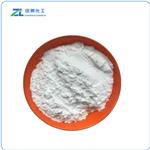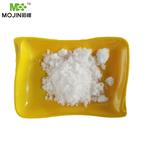Pharmaceutical Applications
Bis(maltolato)oxovanadium (BMOV) has proven itself as a successful antidiabetic agent when tested in animalmodels. Nevertheless, only
very little is known about its mode of action. It is believed that BMOV acts as a competitive and reversible
inhibitor of the enzyme protein tyrosine phosphatase (PTP).
As previously mentioned, BMOV is believed to be a potent and competitive inhibitor of the PTP1B activity
and additionally seem to support the autophosphorylation of the insulin receptor leading to an increased sensitivity
towards insulin. Research has shown that varying the organic ligand has an influence on the effectiveness
and bioavailability of the resulting vanadium compound. It is believed that factors such as absorption, tissue
uptake and distribution are affected most. Interestingly enough, X-ray crystal data of PTP1B soaked with
BMOV showed only vanadate [V(+V)O
43?] at the active site. This would emphasise that the organic ligands
are only carriers of the active compound and play no role in the enzyme inhibition itself. Furthermore,
in aqueous solution, V(IV) is rapidly and reversibly oxidised to V(V), supporting the possible formation of
vanadate.
Biological Activity
BMOV is a potent, orally available vanadium complex th at acts as insulin mimetic. Apparently, BMOV anti-diabetic effect results from enhancement of the tyrosine-phosphorylation of insulin receptor by inhibition of the protein tyrosine phosphatase-1B (PTP-1B). In diabetic rats BMOV restores normoglycaemia without rising insulin levels. BMOV is a potent phosphatase inhibitor.




